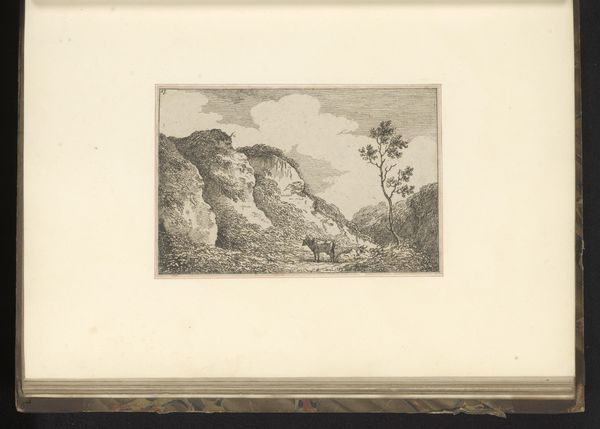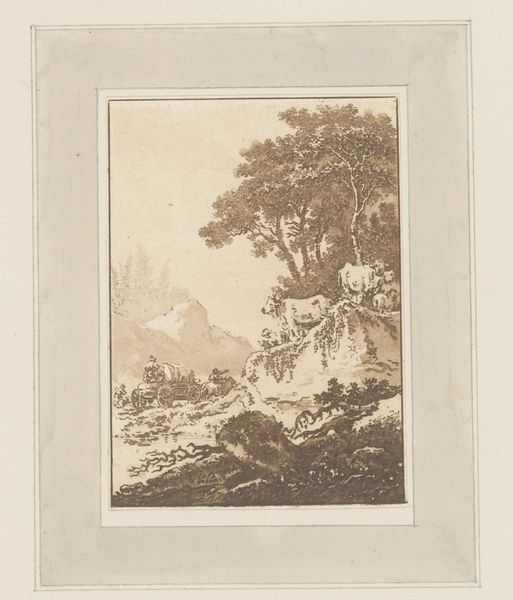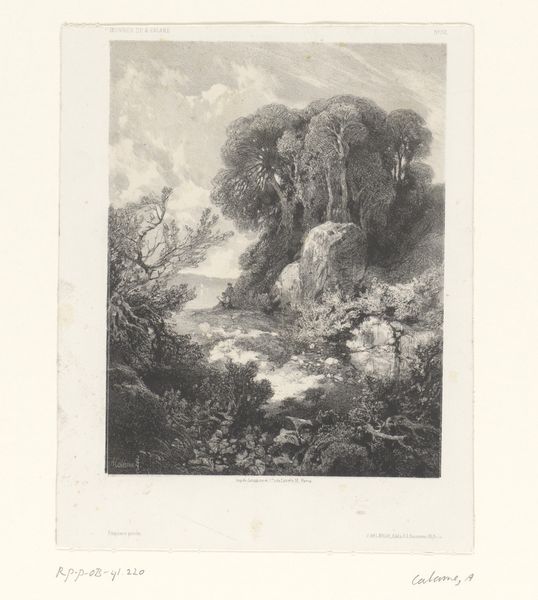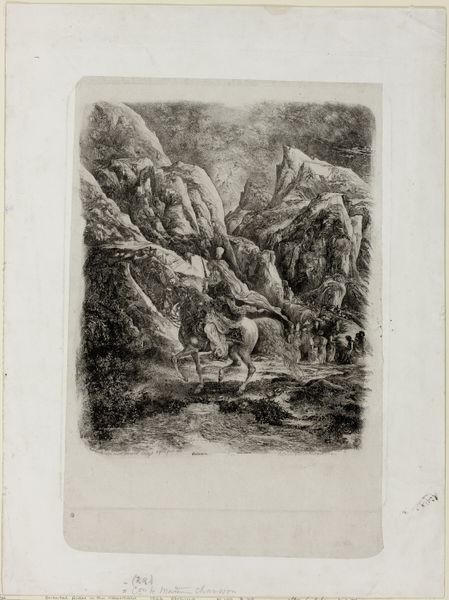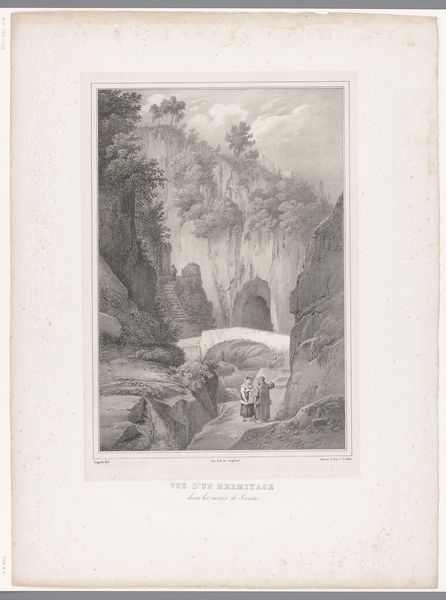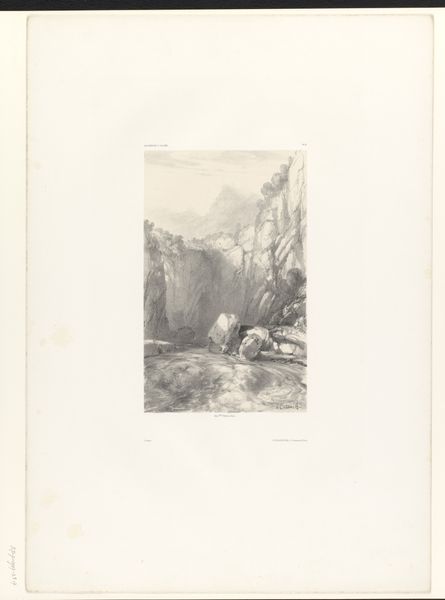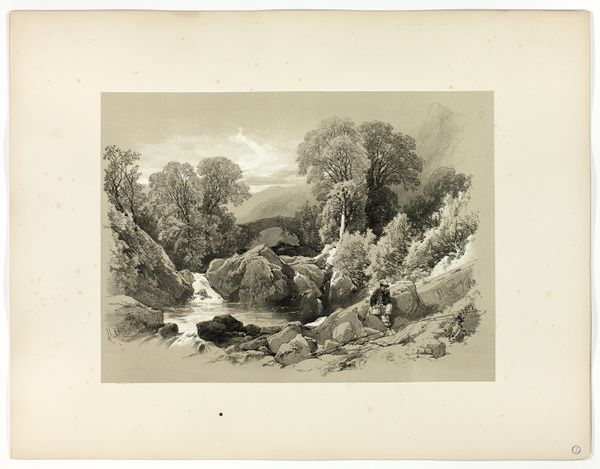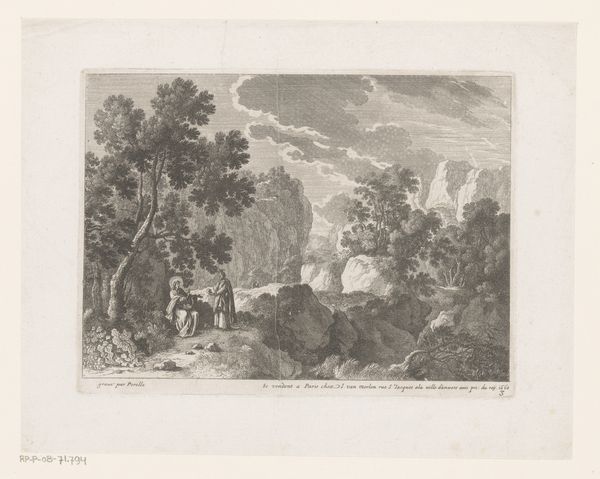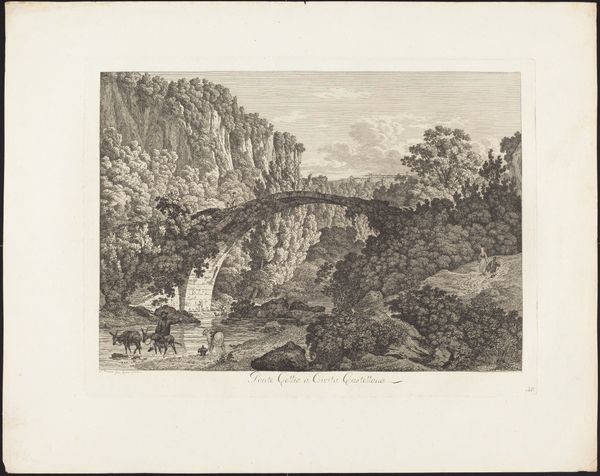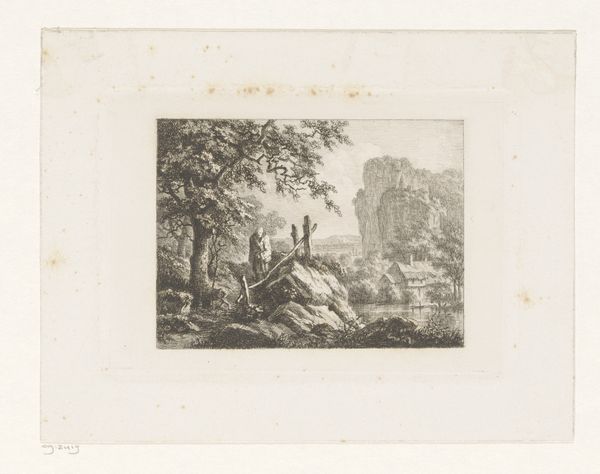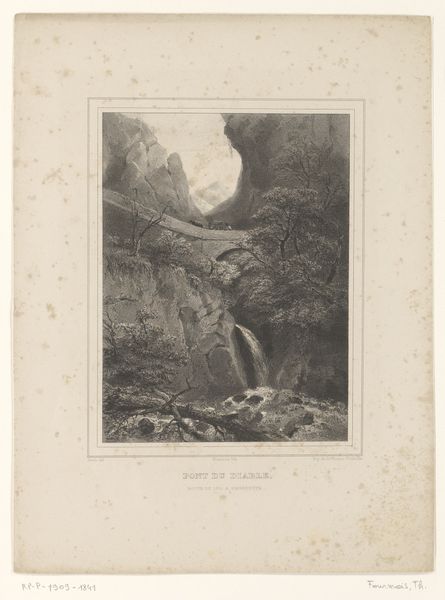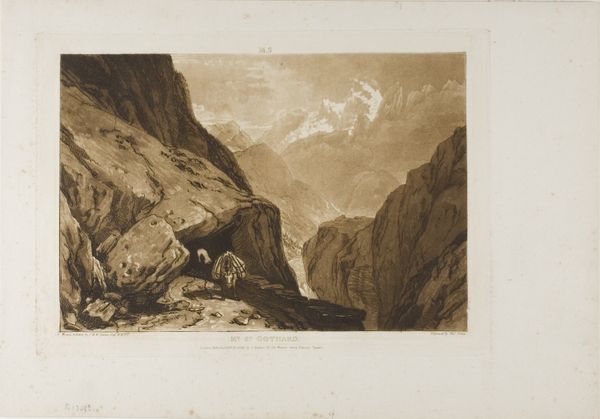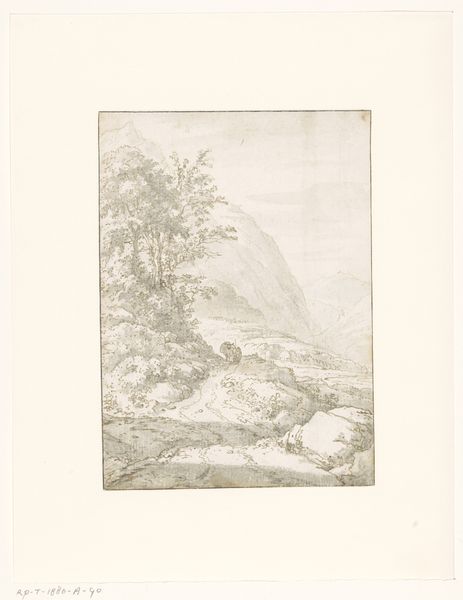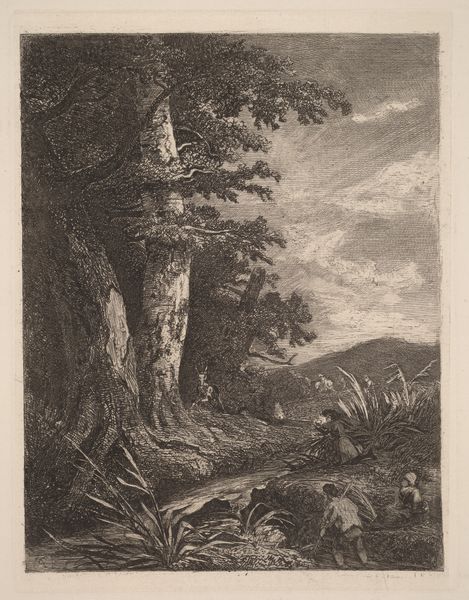
drawing, print, etching, paper
#
drawing
# print
#
etching
#
landscape
#
paper
#
romanticism
Dimensions: 250 × 193 mm (plate); 470 × 331 mm (sheet)
Copyright: Public Domain
Editor: This is Jacob Wilhelm Mechau’s "Entrance to the Narrow Pass" from 1794, a drawing and etching printed on paper. I’m struck by how the small figures seem almost dwarfed by the imposing landscape; there’s a real feeling of vulnerability there. How do you interpret this work? Curator: Absolutely. The Romantic period was deeply interested in the power of nature, but also in humanity's place within that power structure, specifically our struggles within that context. Mechau presents this narrow pass not merely as scenery, but as a site where power dynamics are negotiated and, possibly, challenged. Notice the historical context, late 18th century – an era defined by revolution and shifting social hierarchies. Editor: So, do you think this landscape is more than just scenery? Curator: Indeed. This landscape isn't neutral; it’s imbued with the political anxieties of the time. The pass, with its suggestion of difficulty and restriction, can be interpreted as a metaphor for social constraints or the barriers to social mobility. How do you read the small figures and their apparent helplessness against the backdrop? Editor: They seem like everyday people, just trying to get by. Maybe the "narrow pass" represents the challenges they face in their lives? Curator: Precisely. Mechau subtly critiques the existing power structures. By portraying ordinary individuals navigating a difficult terrain, he seems to evoke the collective struggle against social and political barriers of that time. This speaks volumes about Romanticism’s turn towards valuing individual experience and questioning traditional authority. Editor: I never would have thought of it that way. Seeing it as a commentary on social structures adds a whole new layer. Curator: Right? It highlights how landscapes, seemingly passive, can actively engage in dialogues about identity, power, and resistance. These older works still generate vibrant conversations!
Comments
No comments
Be the first to comment and join the conversation on the ultimate creative platform.
